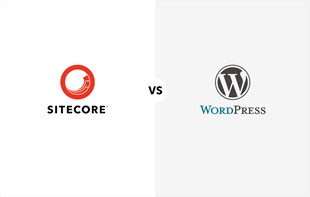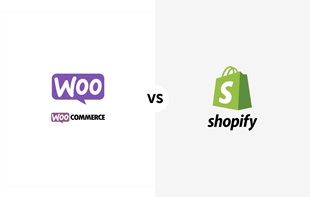15 Online Shopping Stats Every Business Needs To Know in 2023
In 2022, retail eCommerce sales exceeded $5.7 trillion globally. So, as you can imagine, competition is fierce, especially when there is an estimated 12 - 24 million eCommerce sites.
Staying ahead of the competition starts with being informed. Having as much information, data and statistics to hand means that the decisions you make will be based on facts that can guide your business strategies to see greater success.
Most marketers and business owners want to get out in front of eCommerce trends so they can offer what consumers want before they have to ask for it. Basically, knowledge is power when it comes to running your company, so understanding why online shopping is better than having physical store locations and understanding the global eCommerce statistics 2023 is throwing up can be pivotal.
Remember, the more you know about your consumers and the more you know about your wider industry as a whole, the better you can market your products and services to boost online revenue.
So, below, we will reveal the most important online shopping statistics for 2023.
Online Shopping Trends
Before we take a look at some of the key online shopping facts and trends right now you need to take note of, let’s reveal some of the most prominent online shopping trends right now:
- Independent and local businesses are on the rise - Amazon and other eCommerce giants are putting together programs to encourage people to support small businesses and shop local. It is a trend that was very much brought about due to the pandemic, yet it shows no signs of going anywhere. Not only are people shopping local but they are selecting purpose-driven brands. In fact, 71 per cent of consumers prefer doing business with brands that align with their values.
- Social media shopping - Social media platforms such as Instagram, Facebook, and Pinterest have become popular shopping destinations for consumers. Many retailers are using social media to promote their products and offer special deals to their followers.
- Mobile shopping - As mobile shopping statistics 2023 show, more people are shopping with their mobile phones than any other device. If you do not adapt your e-store and optimisation strategy accordingly, you are only going to miss out. Make the most of a mobile-friendly design and mobile shopping tools to provide the best possible experience.
- Personalisation - Retailers are using data analytics and artificial intelligence to personalise the shopping experience for consumers. Personalised recommendations and product suggestions are becoming more common, which can help consumers find what they are looking for more easily.
- Sustainability - Consumers are becoming more environmentally conscious and are looking for sustainable products. Online retailers are responding by offering eco-friendly products and reducing their carbon footprint through shipping and packaging.
- The rise of machine learning and AI - AI is increasingly being used in areas such as marketing, sales, and customer service. These technologies enable customers to enjoy a more tailored shopping experience. Retailers can provide smarter product search results and recommendations based on the shopping behaviour of the person in question. While these technologies are not new, they are advancing, and their take-up is increasing.
- Subscription services - Subscription services are becoming more popular, with consumers signing up for regular deliveries of products such as food, beauty products, and clothing. This provides a convenient and cost-effective way for consumers to receive products regularly.
- Voice shopping - With the increasing popularity of voice assistants, such as Alexa and Google Home, consumers are using these devices to make purchases online. Retailers are adapting to this trend by creating voice shopping experiences that are easy to use and navigate.
15 Online shopping trends 2023
So with this in mind, let's take a look at some important online business statistics, as well as some eCommerce statistics worldwide, so you can see the importance of online shopping in the wider world and allow you to optimise your campaigns and customer experience effectively.
1. As it stands so far in 2023, there are 2.64 billion digital buyers: With a worldwide population of over 7.8 billion that is only growing, there are a huge number of potential customers out there for you to target. Essentially, when you break it down this way, around a quarter of the world’s population is shopping online at the minute. With more and more people shopping digitally every day, now more than ever, it’s important that you maximise your online presence. However, with such a large number of people shopping online, you won’t be able to target everyone, so personalise your efforts and target the ideal audience for your products to see the best results. If you look at online vs in-store shopping statistics for 2023, you will see that the gap is closing all of the time.
2. eCommerce is expected to account for 20.8% of all retail sales in 2023: eCommerce is taking a greater share of all sales with each passing year. It is expanding in every direction and becoming a more integral part of the consumer experience on a global scale. This offers you the potential to increase traffic to your site and, therefore, conversions so long as you engage with your customers and offer them an enjoyable experience when interacting with your brand.
3. 85% of consumers conduct online research before purchasing online: With more options available to them in today’s marketplace, consumers spend more time researching and comparing products between different brands and companies. It’s this ability to research purchases easily that is one of the key reasons people shop online instead of in-store. So, provide customers with detailed, accurate product pages that answer any queries they may have. Create product pages that have high-quality images, descriptions, and specifications to give your consumers as much information as possible. It’s what they want before making a purchase.
4. 69% of shopping carts are abandoned: That means that over a third of people were considering purchasing something online only to change their minds during the checkout process. This may be due to a number of different reasons, but one key takeaway from this figure is that optimising and streamlining your checkout process is critical to avoid losing a large number of conversions.
5. People want round-the-clock shopping: The number one reason listed by shoppers as to why they prefer online shopping is that they can do it at any time of the day. Convenience is a desirable trait because people no longer have to build their day around a store's opening hours and can do it from the comfort of their own homes. Shoppers want the process to be simple and intuitive, so make sure that your customer experience is orientated around the concept of convenience to give your shoppers what they want.
6. 80% of people won’t shop with a company based on a bad experience: Trust is crucial in the digital age. If you don’t have it, you won’t have customers. If they don’t feel valued, if they feel mistreated or have had a bad experience, then the majority of people will not return, no matter what the price or quality might be. So ensure you offer a great customer experience from beginning to end to ensure you build a loyal base of repeat customers.

7. Extra costs are why customers abandon carts: This is an entirely understandable reason. A customer has done their research comparing prices and chosen to go with yours. They get to the checkout stage, and suddenly they have a number of extra costs for shipping, taxes or anything else and all of a sudden, it doesn't seem like such a good deal, and they feel lied to. To combat this, just be upfront with customers and make the checkout process as clear and obvious as possible. Don’t hit them with unexpected costs because that will only damage trust, something we know is a massive turn-off for shoppers.
8. Men spend 68% more online than women: It’s not that men do more online shopping than women, it’s just that when they do, they spend a lot more money than their female counterparts. When men shop online, they tend to do things in bulk and buy more than one thing at a time, so you can use this to your advantage. If you are selling to a male audience specifically, offer bundle packages for them to buy or boost conversions by offering related products to what they are buying without having to abandon their cart to do so. It’s streamlined, efficient and increasingly effective.
9. Generation X and Millennials do the most online shopping: Again, this makes sense. These are the generations who grew up with the internet and are generally more familiar with online shopping. You need to market to these demographics effectively in order to be successful. But be honest and genuine with them, they are tech-savvy and can spot something untrustworthy from a mile away, and when they do, they will be sure to pass that information on to others.
10. 81% of people trust advice from people they know compared to businesses: Use this to your advantage and incorporate the power of social proof to drive higher sales. This can be done in a number of ways. You can utilise influence marketing so that information is coming from a trusted source or display positive reviews, testimonials or case studies prominently so people are able to see responses from people just like them.
11. Smartphones accounted for 72% of retail site visits worldwide: If you’re not utilising mobile platforms, you’re missing out greatly. Customers jump between channels in new ways and expect to get the same experience across all of them. With this in mind, it would be advisable to integrate an omnichannel approach to your marketing strategy so users can access their cart, check out on different devices or generally just shop on whatever platform they prefer.
12. 30% of people would rather buy from a place they have shopped at previously: When it comes to buying online, we rely on our own and others’ experiences to influence our purchasing decisions. Once consumers have had a good experience with a brand, they’re more likely to return to that brand and even recommend it to others. All this means that if you target customers over time with relevant offers based on previous purchases, they’ll most likely return to your store again, so long as they had a positive experience.
13. People are more likely to trust you if contact details are made easily available: Build strong relationships with your customers, make hands-on customer service a priority and ensure customer service representatives are easily accessible. Strong relationships create trust. In turn, this will help to increase conversions and customer retention over time.
14. Almost half of all shoppers go straight to an eCommerce marketplace: Many people will already have accounts or profiles on these large, all-encompassing eCommerce marketplaces, so capturing these users' attention is tricky but important. You must find ways, through data analysis, to understand what these people want specifically and how you gain their trust and get them to visit your site specifically. By doing so, you can get them to come to you first as opposed to a general marketplace.
15. Longer load times on mobile drastically increases bounce rates: The probability of a user bouncing off a mobile webpage increases by 32 per cent when the page takes between one and three seconds to load. Basically, the longer the load time, the higher the bounce rate. So make sure that your website load time is very quick and doesn’t give users the option to click away due to slow loading times.
16. 68% of Gen Z shoppers prefer to purchase products that align with their personal values and beliefs: Let’s end with one of the most important Gen Z shopping statistics. According to a survey conducted by Accenture in 2022, 68% of Gen Z shoppers prefer to purchase products that align with their personal values and beliefs, such as sustainability and social responsibility. This is significantly higher than other age groups, indicating that Gen Z is more likely to be influenced by a brand's ethical and social practices when making purchasing decisions.

Male vs female shopping statistics 2023
It's important to note that gender is not the only factor that influences shopping habits, and there can be significant variations in shopping behaviour based on age, income, and other demographic factors. However, here are some general statistics on male vs female shopping behaviour in 2023:
- Online shopping - You may be wondering who shops online the most. According to a survey by BigCommerce, women are more likely than men to shop online, with 72% of women saying they shop online at least once a month, compared to 68% of men.
- In-store shopping - While women shop online more often, men are more likely to shop in physical stores. A survey by First Insight revealed that 56% of men said they prefer shopping in-store, compared to 43% of women.
- Product categories - Men and women also tend to shop for different types of products. According to a survey by Retail Dive, women are more likely to purchase clothing, shoes, and beauty products, while men are more likely to purchase electronics, sporting goods, and home improvement items.
- Brand loyalty - Women are generally more brand loyal than men when it comes to shopping. As per a survey by Salesforce, 67% of women said they are more likely to stick with brands they like, compared to 57% of men.
- Price sensitivity - Men and women also differ in their price sensitivity. According to a survey by First Insight, women are more likely to be influenced by discounts and sales, while men are more likely to make a purchase based on product quality and durability.
Again, it's vital to remember that these statistics are generalisations, so they may not be applicable to each person. Shopping behaviour is influenced by a variety of factors, and retailers should take a nuanced approach to understanding their customers.
Things To Avoid Regarding Your eCommerce Business
Using these online shoppers' statistics to your advantage can be vital to seeing your business grow online. However, there are some common mistakes you will have to avoid as well when starting out. These include:
- Not understanding your target audience
- A Complicated checkout process
- Not doing enough market research
- Being on the wrong platform
- Not communicating with customers effectively
- Poor customer service
By tackling these common pitfalls head-on, as well as undertaking your own market research and combining it with the aforementioned statistics in the post relating to eCommerce shopping, you will be able to fully optimise your campaign in a way that makes you stand out from the crowd. Through building an approach built upon the relevant data, you will be able to streamline your eCommerce platform, drive more conversions and improve your ROI.
This blog post is Last updated on May 16th, 2023.
Subscribe To Us






.jpg?mw=310)





































.jpg?mw=310)





















































.jpg?mw=310)





















![10 latest trends in digital marketing for beauty brands [Part.2]](/-/media/Appnova/Blog/ScreenShot20151026at1500471940x567/10-latest-trends-in-digital-marketing-for-beauty-brands-Part-2.jpg?mw=310)
![10 latest trends in beauty web design and digital marketing [Part.1]](/-/media/Appnova/BannerImages/18376519151_bbeaa6dafc_b-1/trends-in-beauty-web-design-and-digital-marketing/10-latest-trends-in-beauty-web-design-and-digital-marketing-Part1.jpg?mw=310)
![From story-telling to story-showing: What makes a lifestyle eCommerce? [Part.2]](/-/media/Appnova/BannerImages/ScreenShot20150929at143416/From-story-telling-to-story-showing-What-makes-a-lifestyle-eCommerce-Part-2.jpg?mw=310)











![The generation of me, myself and I – Me-commerce will remain strong. [Infographic]](/-/media/Appnova/BannerImages/mecommerce-cover/mecommerce-cover/The-generation-of-me-myself-and-I--Mecommerce-will-remain-strong.jpg?mw=310)
![A Whole New E-commerce World – Alibaba and the forty others [Infographic]](/-/media/Appnova/BannerImages/camel/camel/A-Whole-New-E-commerce-World-Alibaba-and-the-forty-others.jpg?mw=310)







0.Comments